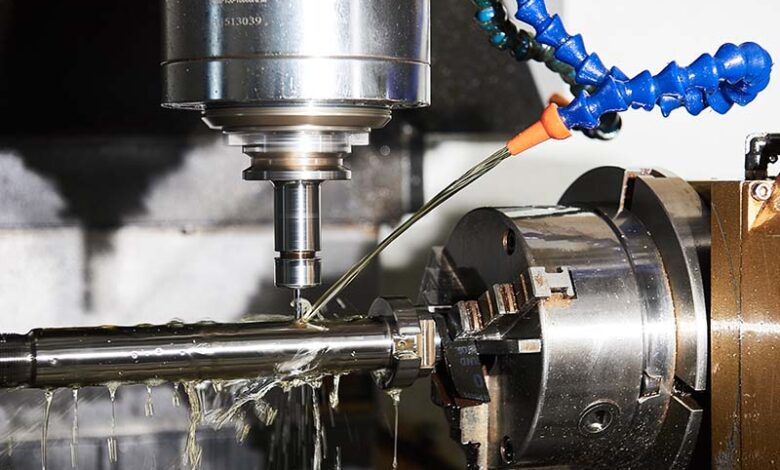Revolutionizing Innovation with Rapid Prototyping: A Complete Guide for Businesses

Innovation is the driving force behind every successful business. In a world where industries evolve at lightning speed, staying ahead of the curve means adopting cutting-edge strategies to bring ideas to life. One such game-changing strategy is rapid prototyping—a process that has transformed how businesses approach product development, testing, and implementation.
The concept of rapid prototyping has gained immense popularity for its ability to shorten development cycles, improve efficiency, and foster creativity. This guide will explore everything you need to know about rapid prototyping, how it works, and why it is essential for modern businesses striving to stay competitive.
1. What is Rapid Prototyping?
Rapid prototyping is a process used to quickly create physical or digital models of a product. These prototypes serve as tangible representations of ideas, enabling teams to test concepts, evaluate designs, and make improvements without the need for expensive, time-consuming traditional manufacturing methods.
This process is an invaluable tool in industries ranging from automotive to healthcare, allowing businesses to streamline their product development cycles.
2. How Does Rapid Prototyping Work?
At its core, rapid prototyping involves three essential steps:
- Design Creation: Using computer-aided design (CAD) software, a digital model of the prototype is created.
- Prototyping Process: Depending on the chosen technique, the prototype is manufactured using either additive, subtractive, or virtual methods.
- Evaluation and Iteration: The prototype is tested, and necessary adjustments are made to improve functionality or aesthetics.
The agility of rapid prototyping lies in its iterative nature. This cycle of testing and refinement ensures that the final product is both functional and efficient.
3. Types of Rapid Prototyping Techniques
3.1 Additive Manufacturing
Additive manufacturing, commonly referred to as 3D printing, builds prototypes layer by layer using materials such as plastics, metals, or ceramics. It is ideal for creating complex shapes and intricate designs.
3.2 Subtractive Manufacturing
This technique involves removing material from a solid block using tools like CNC machines. It is best suited for creating prototypes that require precision and durability.
3.3 Virtual Prototyping
Virtual prototyping uses computer simulations to create and test designs in a digital environment. This method is especially useful in industries like software development and engineering.
4. Benefits of Rapid Prototyping for Businesses
Rapid prototyping offers numerous benefits that make it a must-have for modern businesses.
- Accelerated Product Development: Prototypes can be created and tested in days rather than months.
- Cost Efficiency: Eliminating the need for expensive molds and tools significantly reduces production costs.
- Enhanced Collaboration: Prototypes provide a visual and tangible medium for team discussions.
- Improved Design Accuracy: Iterative testing helps identify and resolve design flaws early.
- Customer Feedback: Businesses can gather real-world input to refine products before launching them.
5. Why Rapid Prototyping is a Game-Changer for Innovation
Innovation thrives in an environment where creativity meets practicality. Rapid prototyping bridges this gap by enabling businesses to experiment freely without the constraints of traditional manufacturing.
With tools like 3D printing, companies can bring even the most unconventional ideas to life. This ability to quickly pivot and adapt is crucial in today’s fast-paced markets.
6. Industries Leveraging Rapid Prototyping
6.1 Automotive
Rapid prototyping is revolutionizing vehicle design by allowing manufacturers to test aerodynamics, ergonomics, and safety features with unprecedented speed.
6.2 Healthcare
In healthcare, rapid prototyping is used to develop medical devices, prosthetics, and surgical tools tailored to individual patients.
6.3 Consumer Electronics
From smartphones to wearable technology, rapid prototyping is at the heart of innovation in the consumer electronics sector.
6.4 Aerospace
The aerospace industry uses rapid prototyping to design lightweight components that meet stringent safety standards.
7. Challenges in Rapid Prototyping
While rapid prototyping offers significant advantages, it is not without its challenges:
- Material Limitations: Not all materials are compatible with rapid prototyping techniques.
- Initial Costs: Investing in advanced equipment can be expensive for small businesses.
- Skill Requirements: Mastery of CAD software and prototyping tools is essential.
Overcoming these hurdles requires strategic planning and a willingness to invest in training and resources.
8. Steps to Implement Rapid Prototyping in Your Business
8.1 Identify Your Needs
Determine which aspects of your product development process can benefit most from rapid prototyping.
8.2 Choose the Right Technology
Select the prototyping method that aligns with your goals, whether it’s 3D printing, CNC machining, or virtual simulation.
8.3 Collaborate Effectively
Foster communication between design, engineering, and marketing teams to ensure alignment.
One way to make informed decisions is by exploring platforms like https://www.premiumparts.com/.
9. The Future of Rapid Prototyping
As technology continues to advance, the potential applications of rapid prototyping are virtually limitless. Emerging trends include the integration of artificial intelligence, automation, and sustainable materials into prototyping processes.
The future promises faster, more accurate, and environmentally friendly solutions that will further enhance innovation across industries.
10. Conclusion
Rapid prototyping is not just a tool—it’s a revolution. For businesses looking to innovate, stay competitive, and meet ever-changing market demands, rapid prototyping offers an unparalleled advantage. By embracing this transformative approach, companies can turn visionary ideas into tangible realities with speed, efficiency, and precision.
